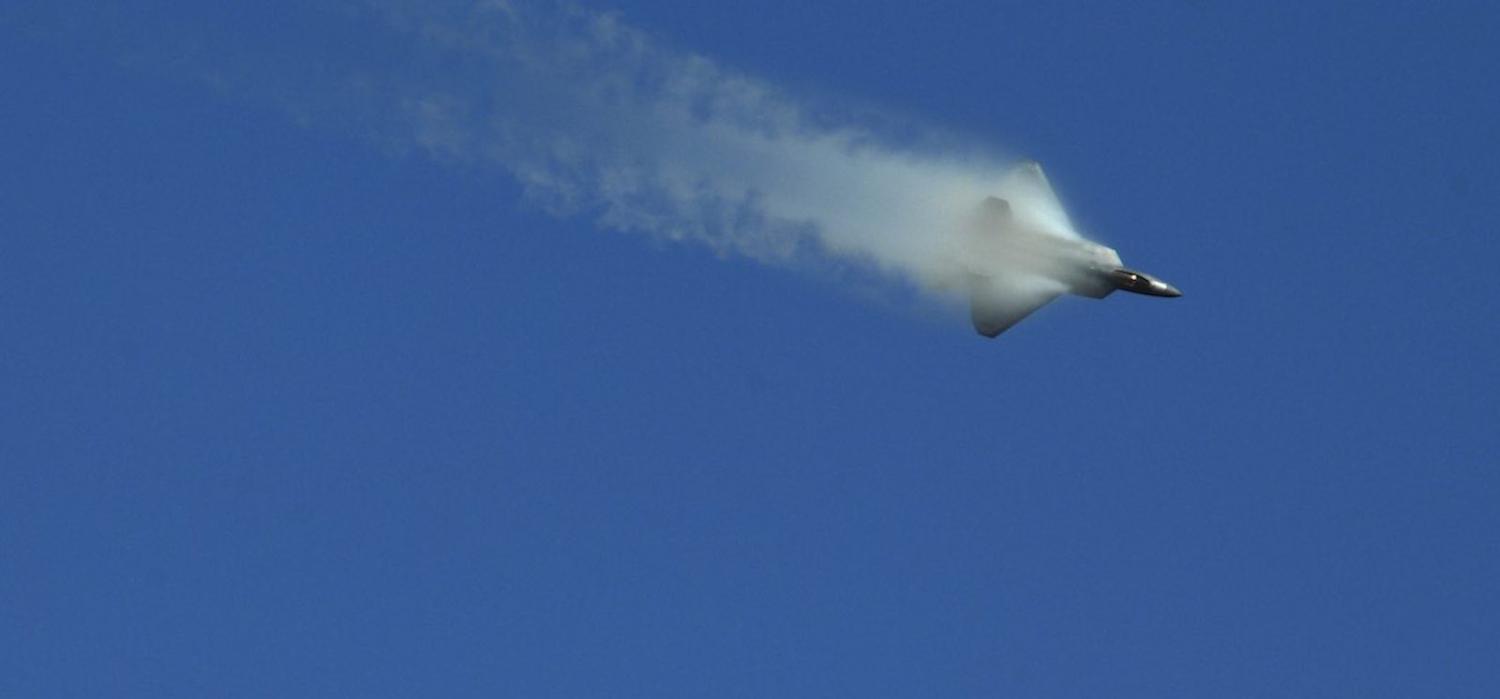In late September, an interesting news story populated some portions of the internet.
A person purporting to be a (possibly retired) Russian fighter pilot flying one of Moscow’s most modern jets, a Su-35, claimed to have engaged in (and won) a mock air-combat against America’s premier fighter, the stealthy F-22 Raptor. The encounter, if real, would seem to have had to occur over Syria, the only location where both aircraft have been deployed.
What seems to be lacking in all this is some consideration of the image itself and the circumstance surrounding it. They do seem a little peculiar.
As proof, he gifted the internet via his Instagram account, a picture of the US jet taken by his Su-35’s Infrared Search and Track (IRST) system, which appears to show a Raptor in the grainy view typical of IR-spectrum images. In one translation of his commentary on the shot, he states that the American flew “arrogantly” and was “punished” for his trouble.
Western reporting on the story has focused on that if the picture is real – while the F-22 remains superior – the Su-35’s capabilities could spell real trouble. In Russia, it led to claims that the Western press has acknowledged the Su-35 as the better aircraft. From the official perspective, the Pentagon has merely stated that it has no knowledge of the incident.
Yet what seems to be lacking in all this is some consideration of the image itself and the circumstance surrounding it. They do seem a little peculiar.
Firstly, it is not at all clear that the Su-35’s IRST, the OLS-35, can actually take infrared images. Indeed, only some such systems can, while many others use a basic infrared sensor to detect points of heat that then cue a regular TV-style camera to picture the target.
And in a detailed review of many IRSTs, by the Janes Defence Weekly technical publication, while several systems are explicitly stated as providing infrared imagery, this description is missing for the OLS-35. Its infrared component is described as a “detector array”, which would fit in with a heat-point system rather than a picture-taking system.
But let’s say the OLS-35 can do IR imaging.
Secondly, there is the issue of the contents of the picture. In the background, roads can clearly be seen, so the Su-35 must have been looking down on the F-22. Also visible is a light-toned rectangle on the US jet, which appears to be an under-wing engine intake, as shown in the image below.
Yet for the under-wing engine intake to be visible, the F-22 would need to be flying upside down. Why do so when “fighting” a Russian jet over hostile territory in Syria? Perhaps the mock air-combat had the Raptor going fully inverted, in homage to Maverick in the movie Top Gun. But if so, why is only one of its two intakes visible? Were the Russian’s tactics so effective they caused the US airplane to begin literally vanishing?

But let’s say this too can be explained as US reticence driven by fear of the Russian Bear. There remains a fourth issue – unprofessionalism, but not the flying kind.
If the image is real, a member of Russia’s armed forces has released military sensor data with no indication that this was authorised. Such information is classified and only released after scrutiny by authorities because it reveals sensor capabilities, and hence, how to defeat them.
And indeed, the Instagram post seems to show how well one of Russia’s most modern aircraft can detect one of America’s most sensitive assets.
It would seem an extraordinarily unprofessional action for someone to put the security of his fellow aviators at risk for social-media “likes”. Personally hazardous too, in a country like Russia where the security services have a reputation for being somewhat unforgiving.
So, what to believe? A Russian military pilot, using sensors his aircraft is not meant to have, took an image of an aircraft flying upside down and disappearing, in an encounter the US says never took place? And then distributed the evidence on the internet risking the lives of his comrades and possibly himself?
Or not?
Before getting too concerned over the Su-35’s superiority to the Raptor, perhaps the image should first be treated with more caution than the Trojans gave to a famous horse.

